For Hanoians who are intoxicated by flowers like they are drunk on strong wine, enjoying flowers on Tet is not simply about "enjoying" the natural fragrance and color of flowers, but also using that natural beauty to "express" their views on life, and at the same time, convey their wishes for the upcoming new year.
From the "royal" flower narcissus
Among all the flowers, narcissus is the earliest to bloom, usually in the early spring, so it is chosen by Hanoians every Tet holiday, along with traditional plants such as peach, apricot, kumquat, etc. According to cultural researcher Huu Ngoc, the hobby of keeping narcissus - a flower symbolizing royalty - of Hanoians has existed for thousands of years. At that time, narcissus not only appeared as an ornamental plant in the living room of many families, but was also used as a fragrant offering to worship ancestors, or a precious flower placed in communal houses, pagodas, and temples to express respect for gods and Buddhas. The ancients also believed that if a family had a vase of narcissus blooming at the exact moment of New Year's Eve, that family would have good luck in the new year.
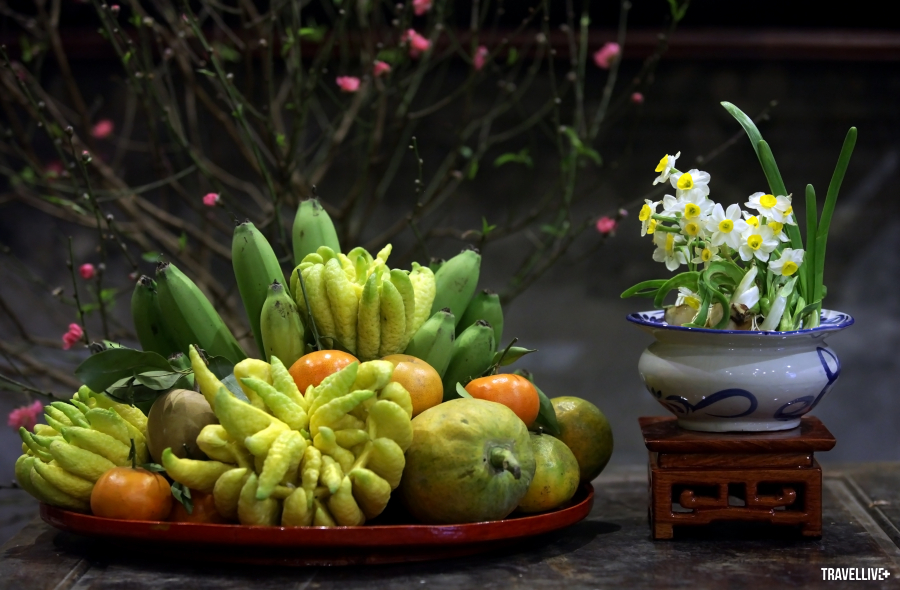
Recalling the memories of the old Tet holidays, Mr. Huu Ngoc said: “In the past, on the occasion of Lunar New Year, people waited for shipments of narcissus bulbs from Yunnan province, China to sell at Dong Xuan market. People who specialized in growing flowers bought larger quantities, brought them home to soak and incubate them until they sprouted and grew roots before selling them. As for flower lovers, they bought a few bulbs, selected them, carefully brought them home to store in a small basket, covered them with rice husks, and watered them daily to maintain humidity. When they sprouted, they transferred them to a glass cup or bowl and started trimming them.”
Pruning narcissus is also a cultural custom with profound meaning and noble art that has been deeply rooted in the tradition of Hanoi people. Also a narcissus player every Tet, Mr. Huu Ngoc shared: “A beautiful vase of narcissus must meet three criteria: a vase of five blessings (a vase of five bulbs, one of which has five equal branches); branches and leaves of the orchid (large, thick, smooth, strong leaves growing straight up); flowers in season, all buds blooming at the same time at the New Year's Eve).
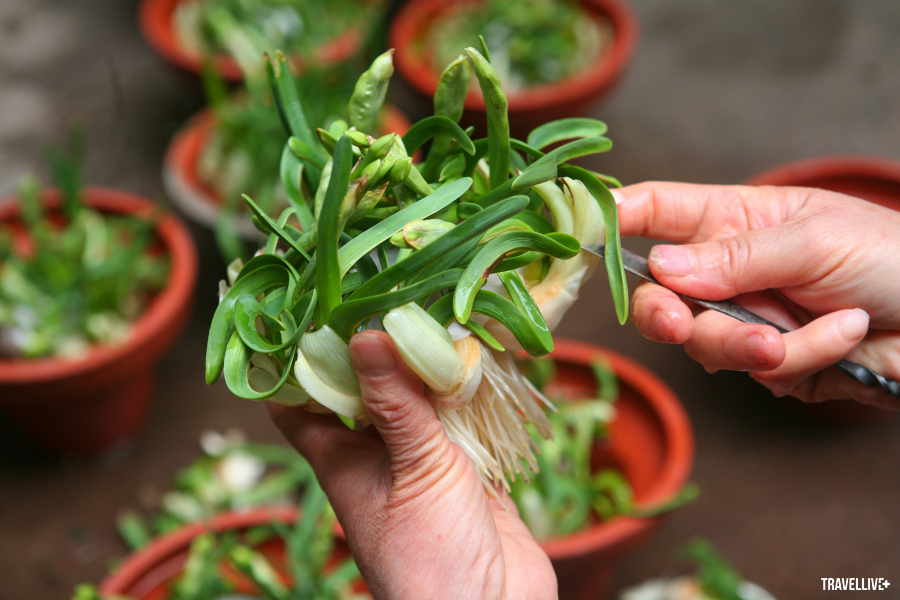
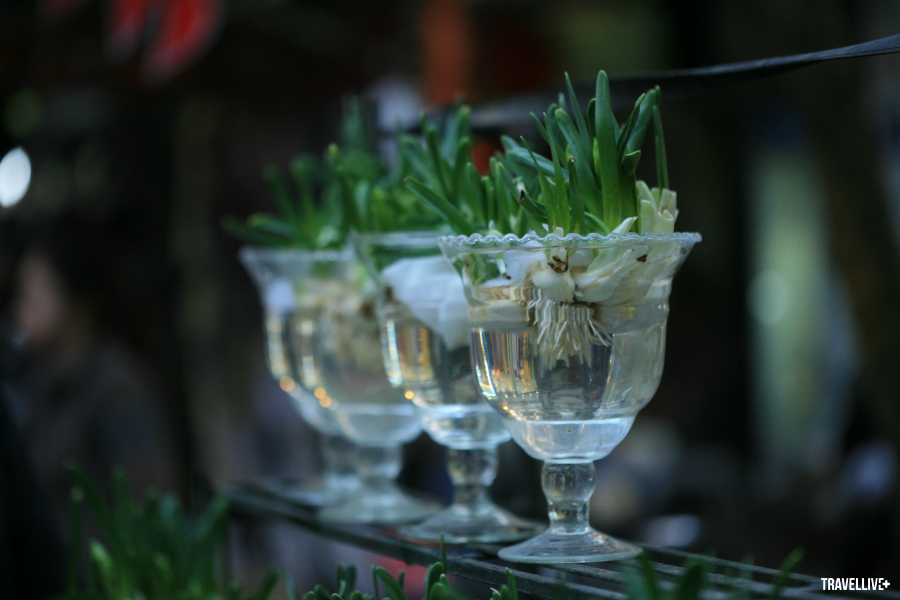
In the past, when the narcissus cutting contest was still a big event, at Huyen Thien communal house on Hang Khoai street or Ngoc Son temple on Hoan Kiem lake, there were flower competitions held. At that time, every afternoon on the 30th of Tet, narcissus flowers would be submitted by contestants, waiting until New Year's Eve to start being judged. On the morning of the first day of Tet, the first prize narcissus vase was placed on a red palanquin with a golden canopy, paraded around Hoan Kiem lake and then brought to the winner's house. In front of the house, the elders wearing ao dai, along with their families and the whole neighborhood stood solemnly with a string of red firecrackers, happily raising their hands to receive the flower of luck, prosperity and happiness in spring.

Come to the peach branch to tell the story of the emperor and empress's love
Turning the pages of ancient Vietnamese history, if anyone admires the king Quang Trung, they must have heard about the peach blossom branch representing the news of victory and love that this infatuated emperor sent from Thang Long to Phu Xuan to give to his beloved wife, Princess Ngoc Han, on the 5th day of the Lunar New Year of the Rooster (1789).
The ancient story about the love between the emperor and the empress may be just a word of mouth with unknown truth, but according to cultural researcher Huu Ngoc, when combined with the book Du dia chi by Nguyen Trai, peach blossoms at that time were indeed grown in Nhat Chieu village, which was changed to Nhat Tan during the Nguyen Dynasty, which is today's Nhat Tan peach village.

From then until now, through many springs, peach blossoms have fascinated people not only by their color and fragrance, but have long become an indispensable spiritual food for the people of the North, especially in the capital during Tet. Displaying peach blossoms on Tet, Vietnamese people entrust their wishes for a new year of peace and prosperity. The deep color of peach blossoms is like the color of blood, symbolizing life, the growth of all things; it is also the color of luck, of the yang energy bringing the warmth of spring, dispelling the cold of winter, dispelling evil spirits.
Explaining the belief in the power of the fragile peach blossoms to ward off evil spirits, Mr. Huu Ngoc said: “The story goes that, in the past, in the East of Soc Mountain, there was an old peach blossom tree, unusually large, whose shade covered a large area. Two gods, Than Tra and Uat Luy, lived here to protect the people of the whole region. Thanks to that, the demons did not dare to come near, and when they saw the peach blossoms, they ran away. Therefore, to prevent the demons from causing trouble, on Tet, people broke off peach blossom branches and put them in their houses. Those who did not have flowers used red paper to draw the two gods and stick them in front of the door to ward off evil spirits.”
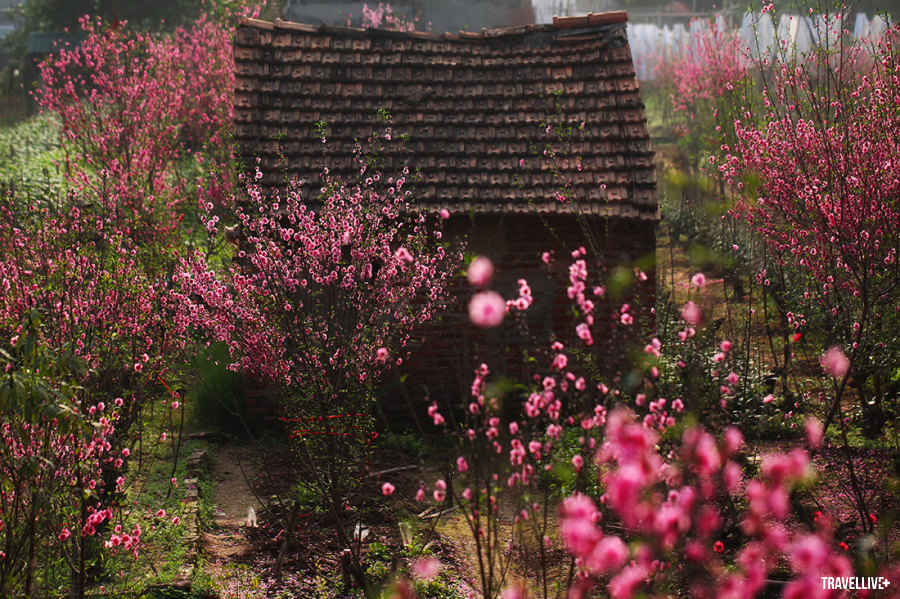
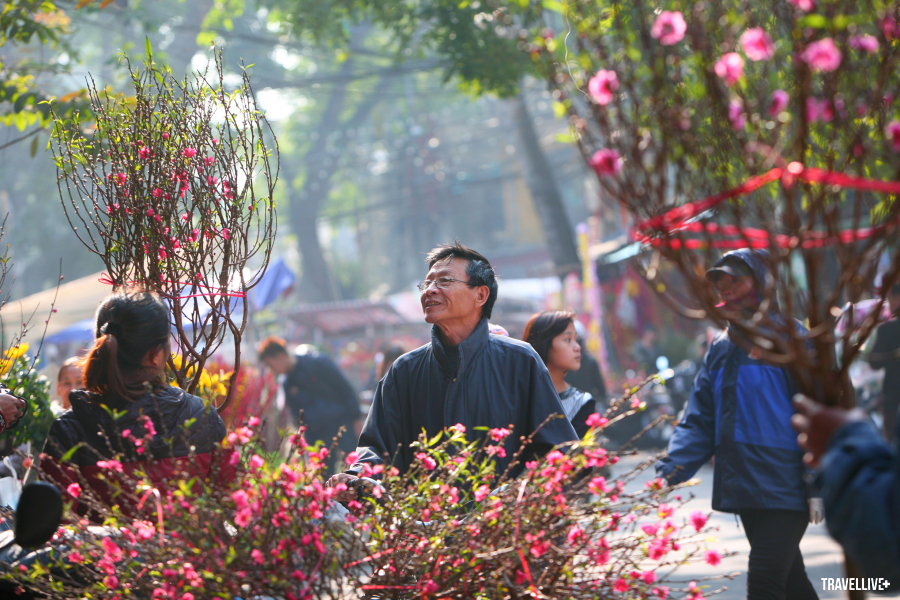

Not to mention the display of peach blossoms, just the act of selling and buying peach blossoms in Nhat Tan, for flower lovers, is of course enough to become a sophisticated yet pure and elegant hobby. People who are not fond of flowers often rush to buy the last peach blossoms on the afternoon of the 29th and 30th of Tet. It is because it is cheap, because it is busy, because it saves time haggling over the price of flowers which to them are just a necessary item for Tet.
For those who are intoxicated by peach blossoms, there is nothing more poetic than letting your soul wander into a space filled with only flowers and sky, amidst the cool spring air, weaving through the bustling crowds, deep into the peach gardens still in bud at the beginning of spring, to choose the most beautiful and satisfactory branch.
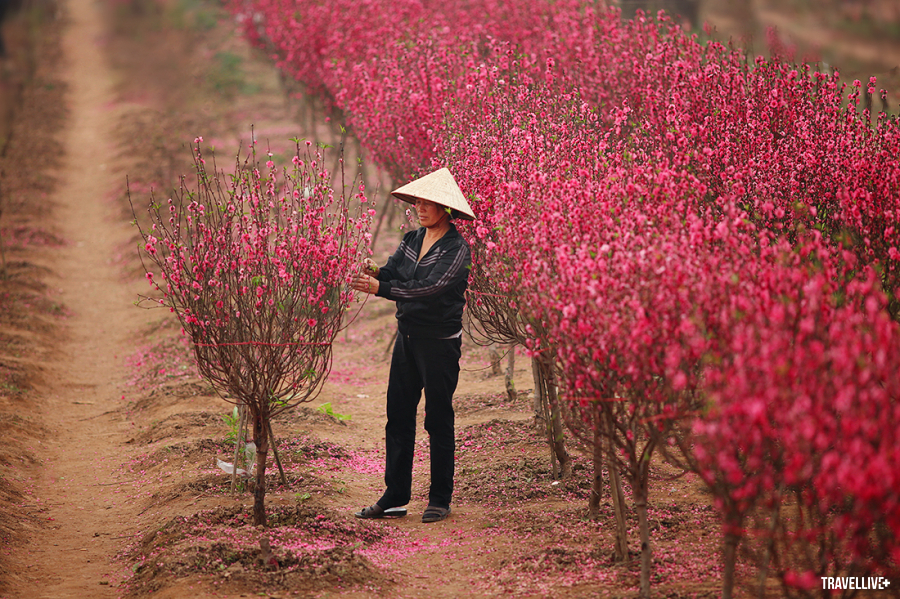
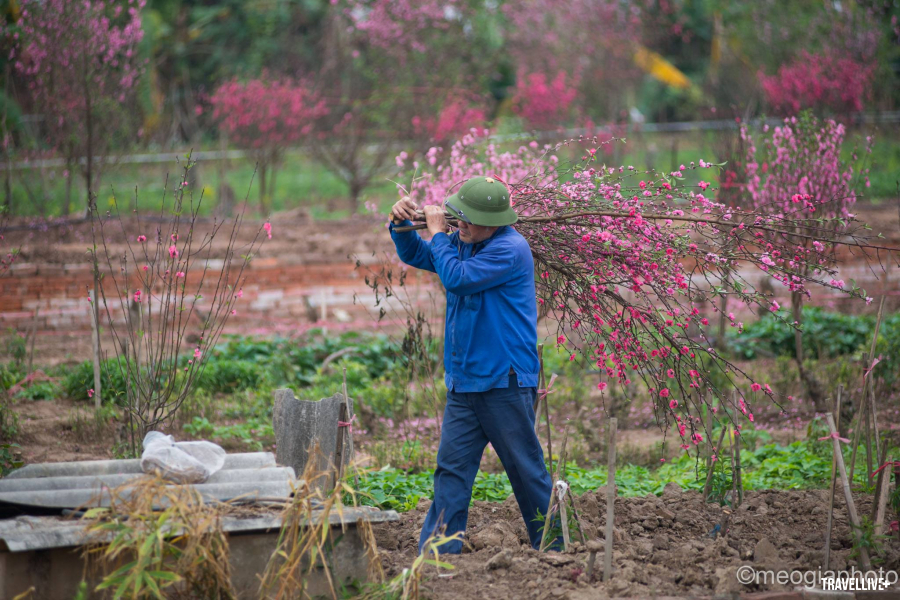
Choosing peach blossoms seems easy, but it is also very complicated. A beautiful peach tree may be rough, but it must be strong and sturdy. The peach branches must be even, moderately large, with small peach branches, growing straight out of the canopy, with buds spread evenly from the top to the bottom of the branches. The petals are double, densely packed like the wish for a spring reunion, when the time comes to bloom, they will dye the hearts of flower lovers red.
The special thing about Nhat Tan peach blossoms is also from the dense, close-knit petals. When Nhat Tan peach blossoms are fully bloomed, they will fall petal by petal and never wither. Therefore, Hanoians who are connoisseurs of peach blossoms not only play during the three days of Tet, many also play half a month before Tet and after Tet, to fully enjoy the peach blossoms from the time they are still in bud, until the last petal falls on the doorstep. And once they choose Nhat Tan peach blossoms, they will never want to play with any other peach variety again.
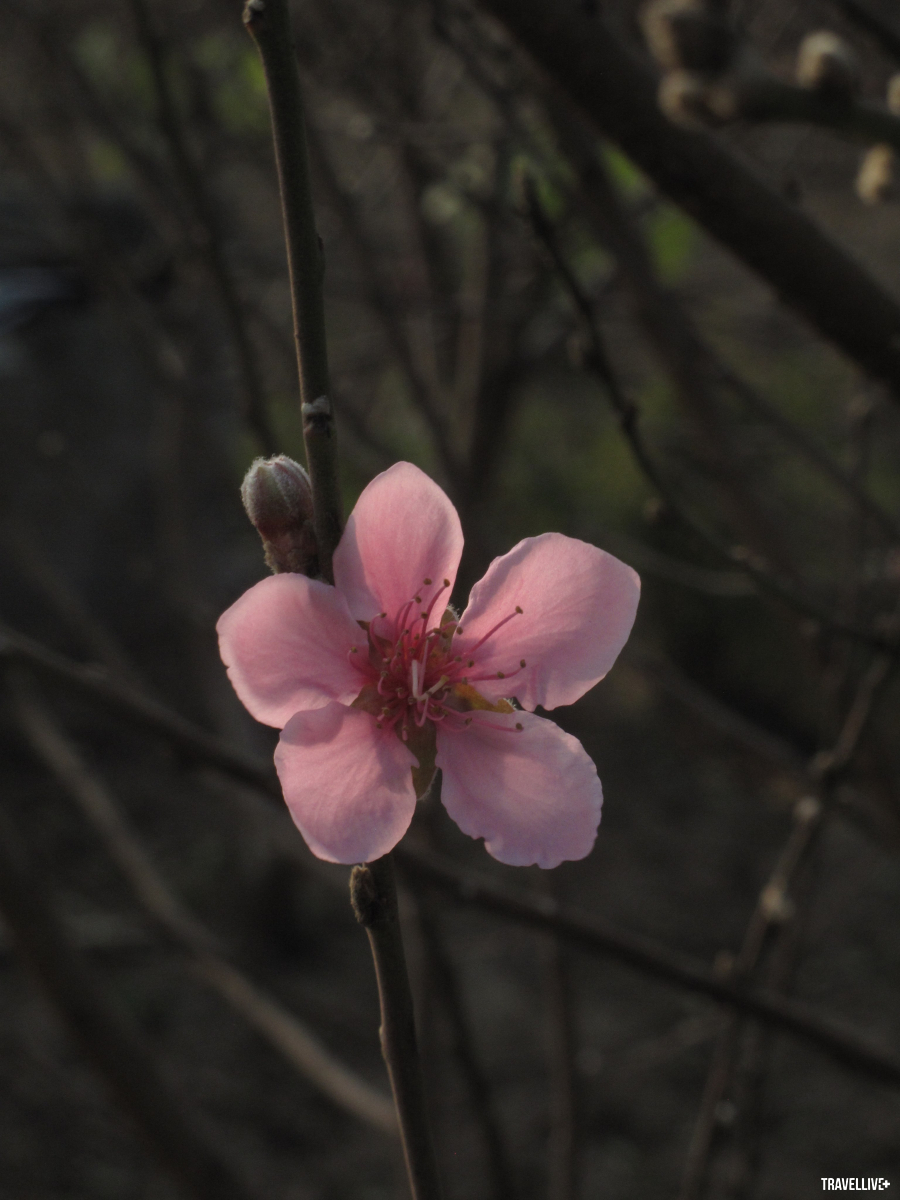
Flowers are drunk, who knows when their fragrance will fade!
Nhat Tan has now become a city. The land for growing peaches is no longer there. But many people who live and die for Nhat Tan peaches have brought peaches to the banks of the Red River and planted them to death to make the peach blossoms still as beautiful as before. During the time of developed trade, peaches from everywhere were imported to the capital: rustic and wild like Son La peaches; fragile and light pink like Tam Diep peaches; or gorgeous and still worldly like That Thon peaches... But no matter how many types of peaches there are, perhaps none can replace the warm, green color of Nhat Tan peaches in the hearts of Hanoians.
The narcissus competition that once bustled Huyen Thien communal house has long been lost, but quietly somewhere in the small corners of Hanoi, those who are passionate about the beauty of narcissus are still diligently pruning it in the bustling streets of spring. And perhaps thanks to that smoldering love, in recent years, from the royal flower of the ancient nobles, narcissus has gradually become a popular hobby of all classes of people, from young people who love flowers to scholars who love a leisurely life, from office workers to housewives, and of course, the elderly who are as infatuated with flowers as teenagers are with love.
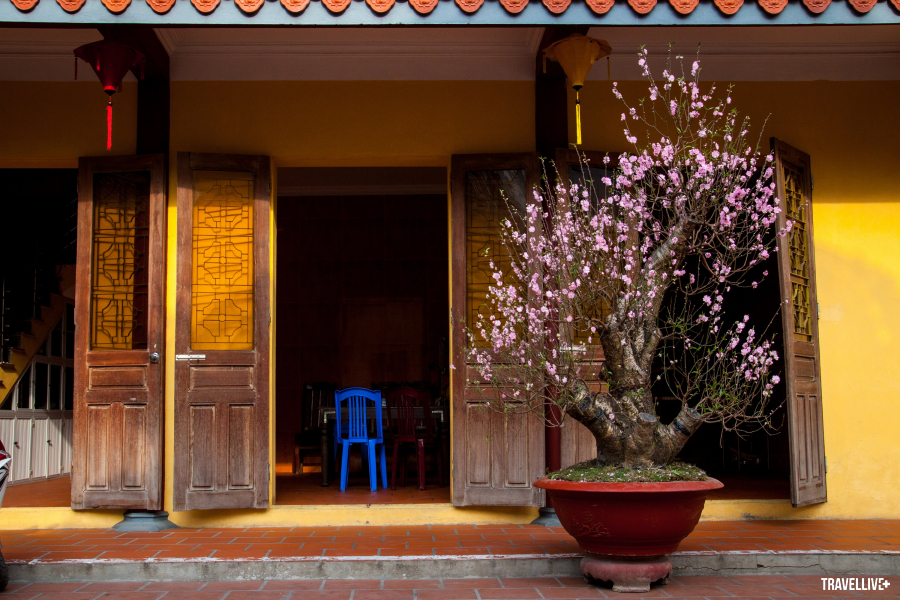
The approaching spring is also the busiest time for these lovers. Peach lovers spend their days looking at the moon, watching the sun, turning the trees, stripping leaves, ringing the bark, fertilizing, and slowing down... Narcissus lovers, from the moment they choose a satisfactory seedling, begin months of caring for it like a baby: soaking the bulb, trimming it 3-4 times, waiting for it to sprout, take root, shape it, and then bloom... Every little change makes their hearts beat faster, or feel sad, regretful, or as if their hearts are blooming. All of those quiet hardships are only in exchange for a few days of enjoying the "golden tray and jade cup" narcissus color mixed with the bright red spring color of peach blossoms overflowing under every roof.
Over time, through the ups and downs of life, the hobby of playing with Tet flowers has not changed. So that anywhere, just seeing a peach blossom branch or a vase of narcissus, the hearts of Hanoians will warm up with a whisper: "Ah, Tet is coming, so close!"
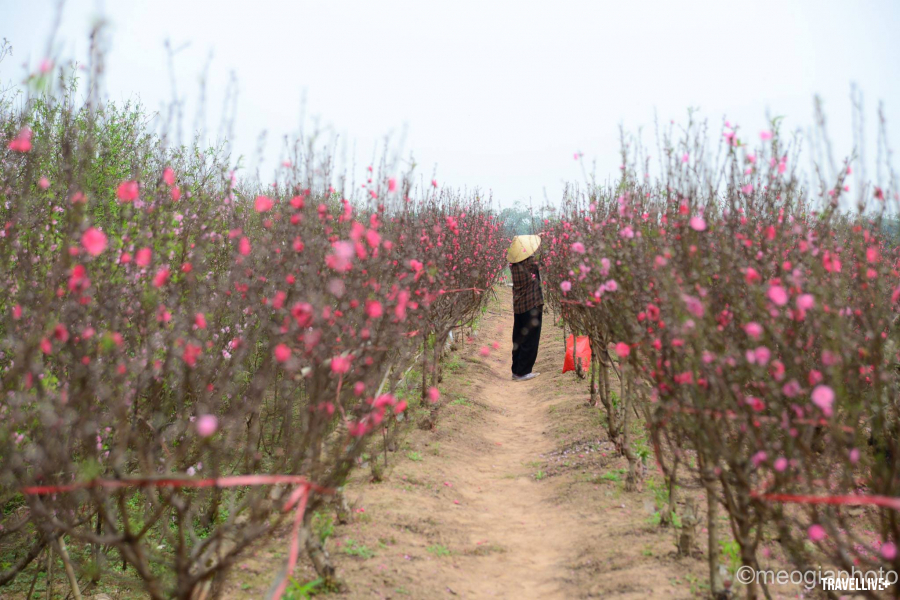





















.jpg.jpg)



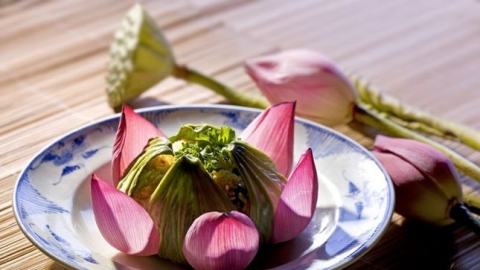
.jpg.jpg)






